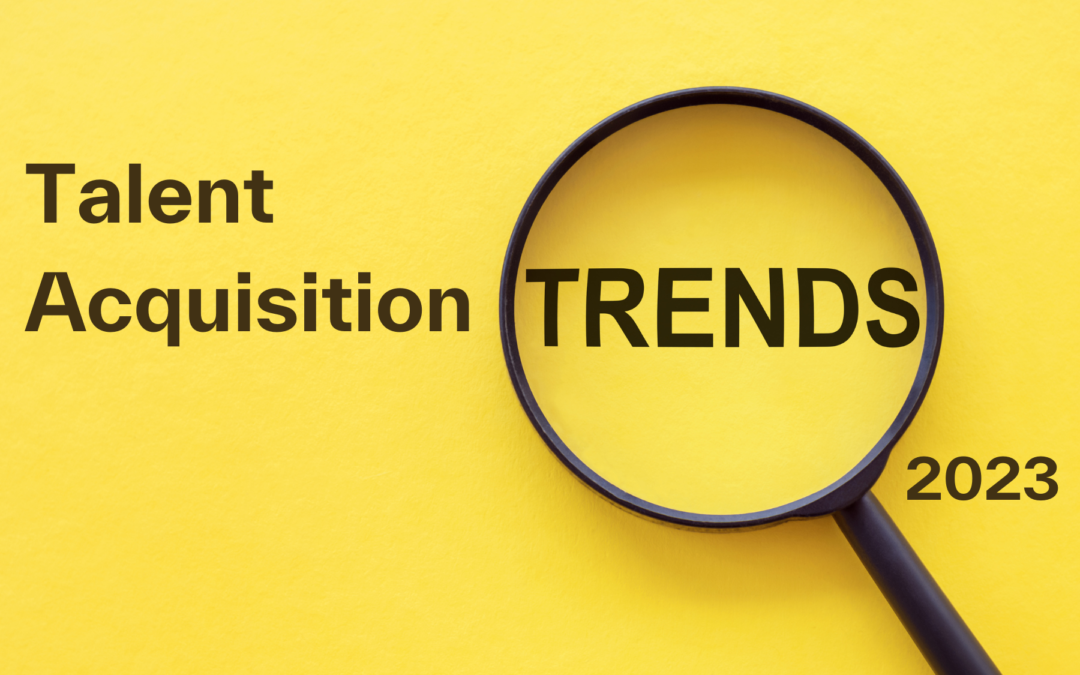The last few years have seen unprecedented disruptions in how, when and even why we work. As we look to 2023, Acquire Talent Consulting provides our thoughts on what talent acquisition trends will bring to the job market in the coming year.
TALENT ACQUISITION TREND #1
The rise of internal mobility: moving around – but not out
Thanks to an uncertain job market, professionals are no longer thinking of career growth in traditional terms. Instead, they are ditching the ladder for the lattice, making moves to other areas within their current organization and signalling a growing internal mobility trend. In many cases, companies will use talent analytics and workforce planning to determine which new roles are needed to futureproof the business and which employees might be a good fit for those roles.
Going forward, employers should boost their internal talent mobility efforts by focusing more on the talent development of their current workforce – offering regular trainings and certification programs to reskill or upskill internal candidates
TALENT ACQUISITION TREND #2
Talent Acquisition and Talent Management: from “it’s complicated” to “in a long-term relationship”
It doesn’t pay to make a great hire if that person doesn’t stick around for very long. That’s why going forward, talent acquisition and talent management teams should work together more closely, from the start of the hiring process through career development and succession. By partnering together, recruiters and talent managers can create a more positive employee lifecycle – better career paths for professionals, which leads to providing the right training and development to move them along their career journey successfully.
TALENT ACQUISITION TREND #3
Executives and professionals for (short-term) hire
Instead of relying only on full-time employee (FTE) hires, the latest hiring trends show companies are increasingly adopting contract employment – looking to interim executives and professionals to meet scaling workforce needs.
There are several benefits to an interim employee approach: people who choose interim or contract work are often highly skilled, mission-oriented and project-based individuals who assimilate quickly into new environments. They can bring unique skill sets and experiences needed for finite projects, during mergers and acquisitions, or to temporarily fill roles either during a leave of absence or while the company searches for a permanent employee.
In 2023, we will see an increase in people seeking flexible opportunities who are willing to compromise a sense of security from a full-time job. In turn, talent acquisition professionals will put more focus on nurturing relationships with candidates seeking contract employment and work with clients to determine the most effective scenarios for filling positions. In such a dynamic landscape, experts recommend companies maintain a 70/30 FTE-to-interim worker mix.
TALENT ACQUISITION TREND #4
Productivity? Check. Now, what about culture?
The past three years have proven that workers can be just as, if not more, productive working from home. The problem is, how can organizations maintain—or even improve—their culture if everyone is still working at their kitchen table?
In 2023, companies will get the best of both worlds by making hybrid workplaces the norm. Experts say hybrid work models will allow employees to enjoy the freedom of remote work while reaping the benefits of being in the office (think: better access to training and development or impromptu brainstorming sessions).
This, of course, is not one size fits all: remote work productivity in the hybrid environment will depend on an organization’s needs, roles and people, and should be based on data, employee sentiment and individual cases. Some may need teams to meet in person on the same day each week, while others may ask employees to be in the office only a few times a month. But in 2023, recruiting trends predict that talent acquisition professionals can expect many more companies to offer hybrid work arrangements to attract top talent, with some requiring remote-first candidates to live within a certain radius to visit the office, when needed. And as working models change, experts say companies will continue to maintain highly productive outcomes.Finding talent that sees you through today and tomorrow
TALENT ACQUISITION TREND #5
Moving from work-life balance to work-life integration
The concept of work-life balance has long been a goal for millions of professionals. But the last few years of remote work have made it even more difficult to tune out the daily demands of the job when off the clock. Many employees have started taking a new approach, foregoing the traditional 9-to-5 in favour of a more fluid schedule.
In 2023, more candidates will look for companies that promote work-life integration: being able to put in hours when it’s most convenient to take care of personal responsibilities, when needed (think: working a few hours in the morning, taking an afternoon break for an appointment or to pick up kids, then back to work in the evening). Watching the clock will become less important as managers assess success by the output of employees and not the timeframe of their workday.
TALENT ACQUISITION TREND #6
Bouncing back: boomerang employees inbound
It sounded like a good idea at the time – when business was booming and nest eggs were growing, many professionals decided to retire early. Others took the big leap to switch jobs—or even professions. Now, with an uncertain economy and shrinking retirement accounts, many retirees are knocking at their former employer’s door, as are professionals who realize the grass isn’t always greener on the other side. This can actually be a bonus for companies as they welcome back former workers – known as “boomerang employees” – who have institutional knowledge and proven skill sets.
In 2023, organizations will start to put more effort into the offboarding process, maintaining professional relationships with employees who leave and making sure those employees know the door is open if they choose to return. And, by investing in digital workforce performance technology, talent acquisition professionals can keep track of former workers to discover who may have the right skills and experiences to fill high-demand roles.


Recent Comments